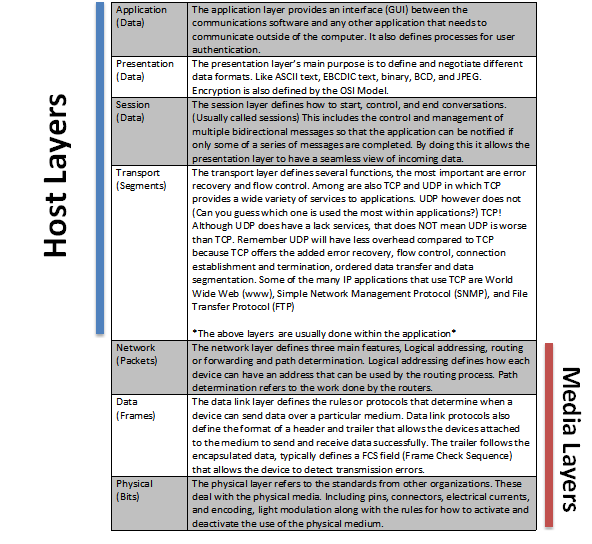The OSI Layer
It is the foundation that makes understanding networks possible the wonderful OSI layer. While studying for the CCENT exam I had a basic understanding of the OSI Model but when reviewing the material I found myself saying over and over, "Oh ya I remember that"! meaning I totally forgot about a certain protocol or how and what services where in each layer. So I wrote down the basics on the ITS forum and decided why not post it here as well.
Background: The International Organization for Standardization (ISO) wanted a network model that would standardize data networking protocols to allow communication between all computers and internet connected devices. So in the late 1970s they began to work on the OSI model (Open System Interconnection) However another effort was being made to create a standardized approach towards network devices from the US Defense Department. Researchers at various universities resulted in a competing network model called TCP/IP Around the 1980s the world had many vendor proprietary networking models along with the two standardized network models. Can you guess which one is the winner? (Hint TCP/IP) So why do we still use OSI Model? Think of this as a reference model because that is exactly what this does. The OSI model helps us discus other protocols and is mainly used as a point of reference. Along with it being in the CCENT and CCNA track you need to understand the concepts and terms behind it. Finally the TCP/IP and other protocols almost always are compared to the OSI model.
The OSI layer consists of seven layers:

Some of the following information was gathered from this source: Odom, Wendell. "The TCP/IP and OSI Networking Models." CCENT/CCNA ICND1 Official Exam Certification Guide. 2nd ed. Indianapolis, IN: Cisco, 2008. Print.